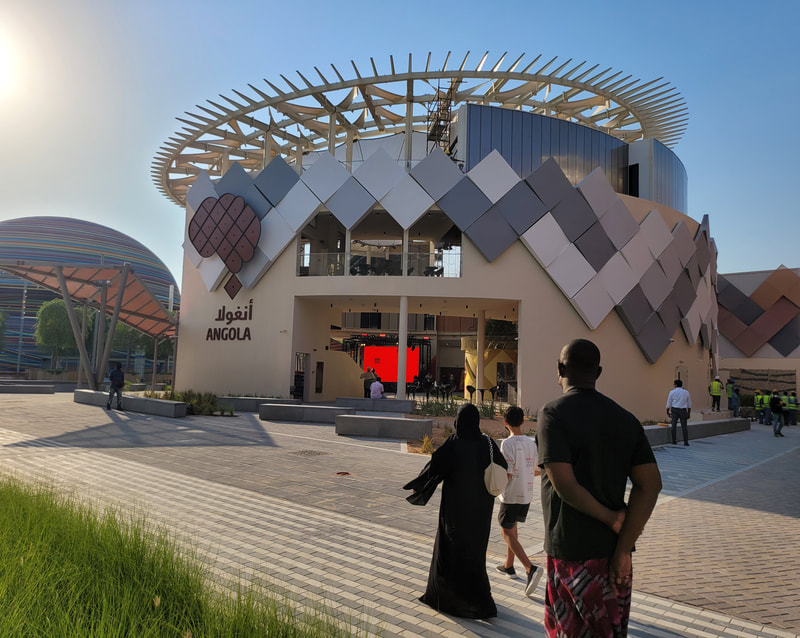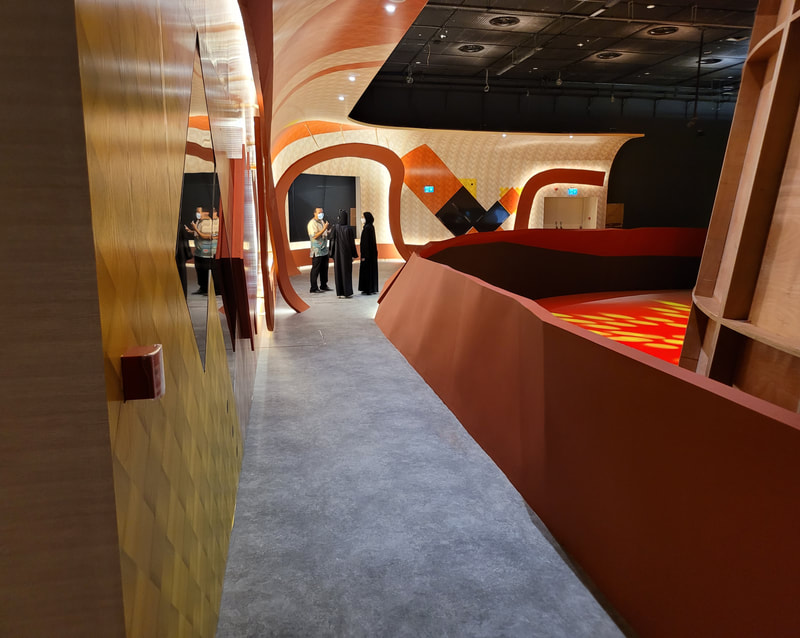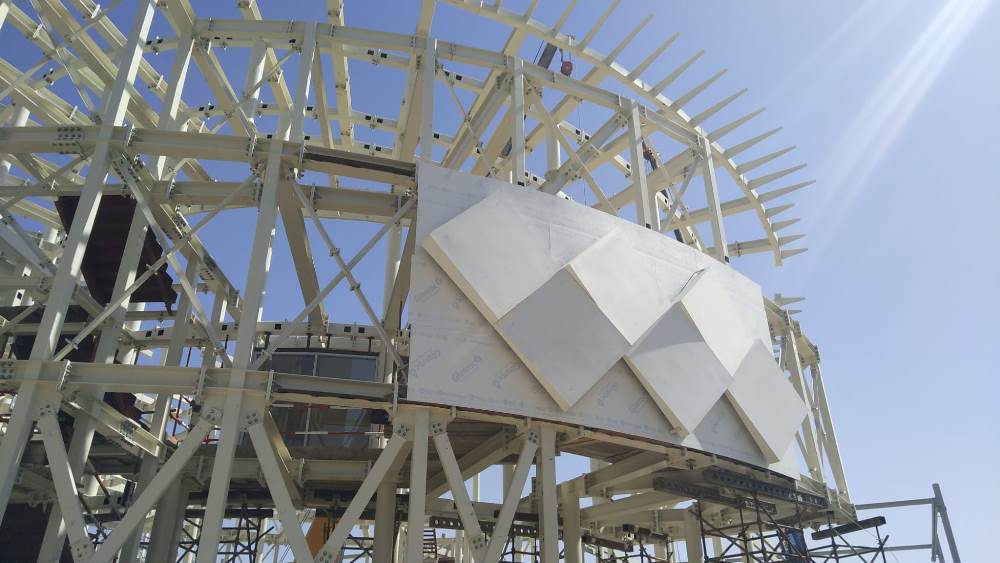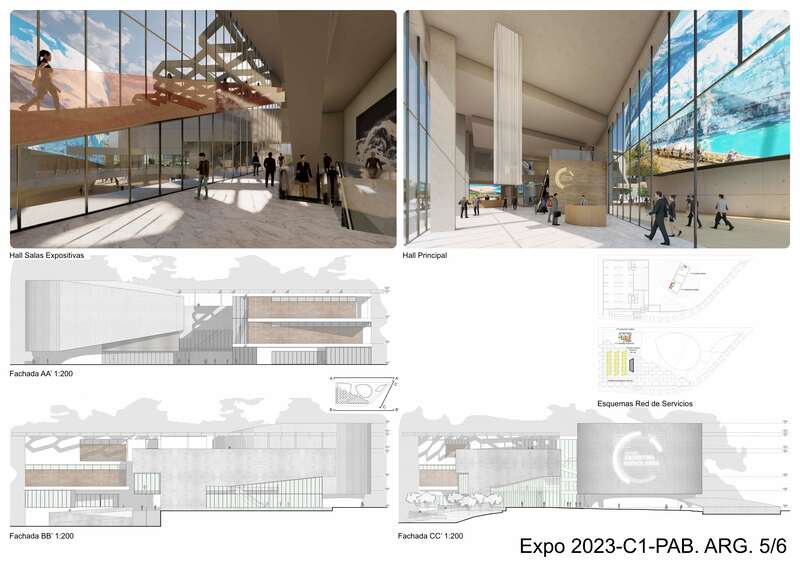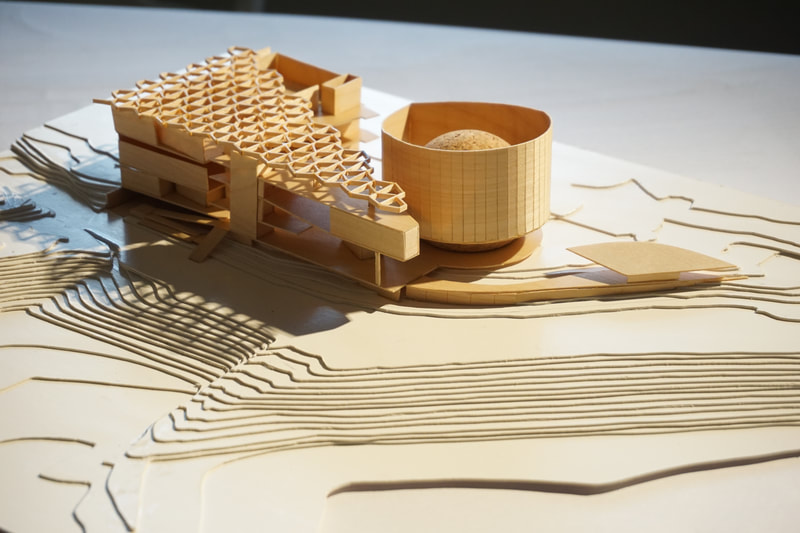SPAIN PAVILION_ Osaka 2025
Concurso Acción Cultural Española
Redacción del Proyecto Básico y Proyecto Ejecutivo de diseño de arquitectura y oferta expositiva integral del Pabellón de España en la exposición Universal Expo 2025, Osaka, Kansai, Japón.
Daniel Toso
Masterplanstudio
Memoria técnica de los elementos expositivos
Los elementos expositivos se distribuyen entre las dos plantas del pabellón.
En la planta baja (PLANTA 0) encontramos una serie de elementos icónicos que buscan generar un gran impacto en el público visitante:
La planta alta (PLANTA 1) acoge la exposición en sí, dividida en cuatro espacios diferenciados que ofrecen experiencias muy diversas.
Los elementos expositivos se distribuyen entre las dos plantas del pabellón.
En la planta baja (PLANTA 0) encontramos una serie de elementos icónicos que buscan generar un gran impacto en el público visitante:
- El escenario exterior, con una gran pantalla en L que irá cambiando con cada espectáculo.
- El auditorio / sala polivalente, equipado con las últimas tecnologías para ofrecer actos de calidad.
- Dos instalaciones artísticas: una del colectivo barcelonés Akyute y otra del colectivo madrileño Luz Interruptus.
- La espectacular rampa de subida al primer piso, que da acceso a la exposición.
La planta alta (PLANTA 1) acoge la exposición en sí, dividida en cuatro espacios diferenciados que ofrecen experiencias muy diversas.
- La antesala, con un gran sol que da la bienvenida a los visitantes con datos sobre el país.
- El Acto I, una playa infinita con proyecciones interactivas sobre la arena, con la que los visitantes activarán sus recuerdos.
- El Acto II, un enorme mar de datos, imágenes y videos que ofrecerán un amplio panorama de la relación de España con el mar.
- El Acto III, el último espacio, un gran domo inmersivo que mostrará una película 360 que transportará al visitante a los mares de España.
ANGOLA PAVILION EXPO DUBAI 2020.
The topic chosen for the participation of Angola is "CONNECT WITH TRADITION TO INNOVATE -
FROM TRADITION TO INNOVATION", being included in the sub-theme of Expo - Opportunities.
The theme chosen by Angola allows a debate and broader reflection on a range of
opportunities arising from human development and growth, based on the aspirations of the
people, with a view to their transformation and the creation of opportunities for a better
future.
Not forgetting the strong component of innovation and technology that become a challenge
for the Country.
Thus, Angola Pavilion - following the tradition of other Expos - will be conceived and developed to showcase the Country, addressing the theme and sub-theme of the Expo, always with an informative view, and complemented by an educational, gastronomic and a business forum, whose aim is to build bridges between foreign investors and local entrepreneurs.
The Pavilion will be a space that combines the characteristics of avant-garde museography,
including Emotion, Surprise, Content and Dynamic Communication, through interactive
elements and multimedia to be contemplated and appreciated by the Visitors.
Design basis: the “key idea” and its evolution
The basis and inspiration for the architecture and narrative of the exhibition of the Pavilion is Sona Geometry (drawings on the sand).
These drawings belong to an ancient tradition of narration and transmission of knowledge and wisdom, dating back to the seventeenth century, spreading between the north-east of the country to Zambia and the Democratic Republic of Congo. More than a drawing, the narrative constructions of the Sona contain mathematical properties and algorithms that until today continue to be study and analyze. The construction of each drawing obeys complex rules of arithmetic sequences and other mathematical operations. In order to fully understand the order of the drawing and its complex, non-linear ideograms, the “Masters” (teachers) simplified the process of drawing in two numbers and a geometric algorithm.
The drawings or ideograms as they are called are graphic representations of tales, stories, games, proverbs, parables, myths, songs, proofs, and even laws, which gain levels of depth and complexity depending on the combination of lines.
Through the theme of the Pavilion "Connect with Tradition to Innovate - from Tradition to
Innovation", it is intended to honor an ancient tradition of sharing of knowledge, as well as using it as a starting point for our journey, visiting traditional and local knowledge in an innovative way, and using this base to (re)-think local and global problems.
FROM TRADITION TO INNOVATION", being included in the sub-theme of Expo - Opportunities.
The theme chosen by Angola allows a debate and broader reflection on a range of
opportunities arising from human development and growth, based on the aspirations of the
people, with a view to their transformation and the creation of opportunities for a better
future.
Not forgetting the strong component of innovation and technology that become a challenge
for the Country.
Thus, Angola Pavilion - following the tradition of other Expos - will be conceived and developed to showcase the Country, addressing the theme and sub-theme of the Expo, always with an informative view, and complemented by an educational, gastronomic and a business forum, whose aim is to build bridges between foreign investors and local entrepreneurs.
The Pavilion will be a space that combines the characteristics of avant-garde museography,
including Emotion, Surprise, Content and Dynamic Communication, through interactive
elements and multimedia to be contemplated and appreciated by the Visitors.
Design basis: the “key idea” and its evolution
The basis and inspiration for the architecture and narrative of the exhibition of the Pavilion is Sona Geometry (drawings on the sand).
These drawings belong to an ancient tradition of narration and transmission of knowledge and wisdom, dating back to the seventeenth century, spreading between the north-east of the country to Zambia and the Democratic Republic of Congo. More than a drawing, the narrative constructions of the Sona contain mathematical properties and algorithms that until today continue to be study and analyze. The construction of each drawing obeys complex rules of arithmetic sequences and other mathematical operations. In order to fully understand the order of the drawing and its complex, non-linear ideograms, the “Masters” (teachers) simplified the process of drawing in two numbers and a geometric algorithm.
The drawings or ideograms as they are called are graphic representations of tales, stories, games, proverbs, parables, myths, songs, proofs, and even laws, which gain levels of depth and complexity depending on the combination of lines.
Through the theme of the Pavilion "Connect with Tradition to Innovate - from Tradition to
Innovation", it is intended to honor an ancient tradition of sharing of knowledge, as well as using it as a starting point for our journey, visiting traditional and local knowledge in an innovative way, and using this base to (re)-think local and global problems.




















